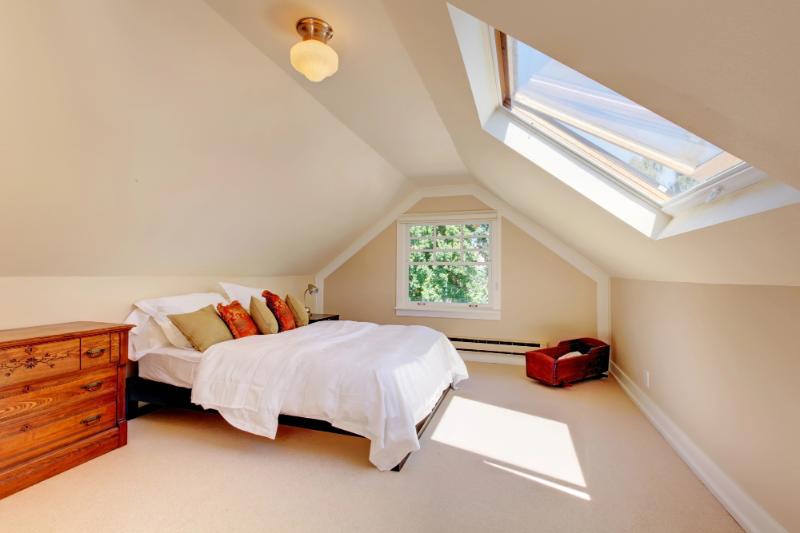Are you tired of living in a dark, dimly lit space? Do you want to bring more natural light into your home without sacrificing privacy? Installing a skylight may be the perfect solution for you. Skylights are designed to brighten up any room and add a touch of beauty and ventilation.
Before jumping into this home improvement project, there are some important things that you need to know. Keep reading to learn the 7 things you need to know before installing a skylight.

Roofing Conditions
Before adding a skylight to your home, you must first assess the condition of your roof. Checking for any damage or leaks should be a top priority to prevent further problems down the line. If you live in Tennessee, look for experienced roofers in Clarksville to help you with your roofing needs. They can provide a professional assessment and ensure that your roof is in good condition before installing a skylight.
If you have preexisting issues, it’s best to address them first before moving forward with the skylight installation. You don’t want to risk damaging your new skylight or causing additional problems with your roof.
Location and Placement
Believe it or not, the direction your skylight faces can impact the amount of direct sunlight that your room can receive. For example, if your skylight faces towards the north side, it may receive less direct sunlight, whereas a skylight facing the southern side may experience more sunlight during the day.
Maximizing natural light and ensuring functionality in your space is not something to take lightly, so it’s important to consider the location and placement of your skylight carefully. The strategic placement of your skylight can also help with ventilation and energy efficiency.
Installation Challenges
Installing a skylight is not a simple DIY project; it comes with its unique set of challenges. From structural considerations to weatherproofing, every aspect requires meticulous planning and execution.
A common hurdle is ensuring that the skylight is properly sealed and insulated to prevent leaks and drafts that could lead to discomfort and increased energy bills. The type of roof—be it flat, sloped, or unusually shaped—can significantly influence the complexity of the installation process. Enlisting the help of professionals who specialize in skylight installation will ensure that the job is done right the first time.
Energy Efficiency
Often, people associate skylights with increased energy bills due to the additional source of sunlight. On the contrary, skylights can actually reduce your energy consumption if installed properly.
First, choose the right type of glass for your skylight. Low-E (low-emissivity) glass helps to regulate temperature and block harmful UV rays while still allowing natural light to enter your home at the same time. Some modern skylights offer solar-powered blinds, adding a layer of insulation and allowing you to control the amount of sunlight entering the room. Now, you can enjoy natural light without worrying about your energy bills.
Weather Considerations
When planning to install a skylight, consider the local weather patterns in your area. Areas prone to heavy rain, snowfall, or extreme temperatures require skylights designed to withstand these conditions.
Skylights in snowy regions benefit from features like heated glass to prevent snow accumulation and ice dams, which can lead to leaks and structural damage over time. Areas with high winds might need skylights with stronger frames and enhanced sealing capabilities to prevent drafts and water ingress.
Maintenance Requirements
Like any other feature in your home, skylights also require regular maintenance to extend their lifespan and prevent issues. With proper care, skylights can last for decades without major repairs or replacements.
When you are cleaning your skylights, you are preventing dirt, debris, and water buildup that could lead to leaks and damage. It’s best to schedule professional maintenance at least once a year to ensure that your skylight is functioning correctly and identify any potential problems.

Permits and Regulations
Depending on where you live, you may need to obtain a permit before installing a skylight. Certain types of skylights may have specific requirements or restrictions based on their size and location. Some areas have limits on the number of skylights you can install in a single room or require that skylights be placed at least 3 feet away from any property lines.
Or, if you live in a historic district or conservation area, there may be additional regulations to consider. Be sure to check with your local government before proceeding with the installation to avoid any potential issues or complications.
Installing a skylight can significantly enhance the aesthetics, ventilation, and natural lighting in your home. Know the location and placement of your skylight, consider the challenges and maintenance requirements, and ensure that it complies with local regulations. With proper planning and professional assistance, you can enjoy a brighter, more beautiful living space for years to come.

